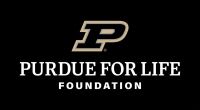This project is now in update mode. Check back regularly to see how things are progressing.
Help us investigate the safety of your air!
Our Project
Our team is investigating hazardous chemicals emitted from the most popular water pipe repair technology in the U.S. We are screening for the presence of cancer causing air pollutants and determining the degree these chemicals exceed safe exposure standards for workers and the public. The water pipe repair method is called CIPP or cured-in-place-pipe and is used to repair 50% of all sewer pipes, drinking water pipes, and stormwater culverts. Workers insert chemically treated fabric into an existing pipe and harden it using methods including hot water, steam or ultraviolet light. Our team is focusing on chemicals emitted into the air that workers and people nearby can be exposed to. In August, we drove 4,500 miles to test the air for hazardous materials at five CIPP sites in California. The West Coast work expended seed funding initially provided by the National Science Foundation and more money is needed for testing supplies so we complete this study.
Why are we investigating chemicals emitted by CIPP into the air?
As of today, there has been no independent study to document the health and safety risks for CIPP emissions. Our project will help CIPP workers, health officials, and the public better understand safety risks. Thousands of CIPP workers in the U.S. work with this technology every day. Many work under circumstances where they are exposed to the chemicals from CIPP. The public has been exposed to CIPP chemicals which has prompted evacuations of daycares, schools, office buildings, residences, HAZMAT response, and trips by affected people including children to hospitals. Air testing has generally not been conducted rapidly or at all so officials could not ascertain whether the actual indoor air chemical exposures were safe or not. Emergency responders who have contacted us have declared they do not have the information needed to understand the chemical risks. They want the results of this study. CIPP workers who contacted us also want the results of this study. This study needs to be completed.
How Can You Help?
- Please consider donating. Any amount is greatly appreciated. We need your help.
- Share this page on social media. The more people who know about this effort the better.
Our initial investigation has already uncovered something pretty significant. We are seeking donations to complete this study and make the results public. Donated funds will be managed by Dr. Whelton and be used to purchase testing supplies, analytical expenses, travel and publication costs to make the results public.
If you're interested in learning more about making a major gift to this effort, please contact Don Fry at (765) 494-2236 or DRFry@prf.org
Project updates will be posted here and at WheltonGroup.org, @TheWheltonGroup, and @BrandonBoor.



$20
Energizer
This contribution will allow us to purchase gas tanks for analytical instrument use. We will need to purchase multiple gas tanks.
$27
Backer
This contribution allows us to purchase supplies, so we can finish analyzing our samples.
$89
Supporter
This contribution allows us to purchase one tube for air sampling. We will need more than 80 tubes.
$100
Champion
This contribution will allow us to make the results public through a scientific journal.
$160
Booster
With this contribution we can purchase one pack solvents to extract chemicals from samples. We will need many packs.
$300
Extraordinary Supporter
This contribution allows us to purchase a pump for air sampling. We will need multiple pumps
$900
MVP
The contribution allows us to purchase safety equipment for the field team.


